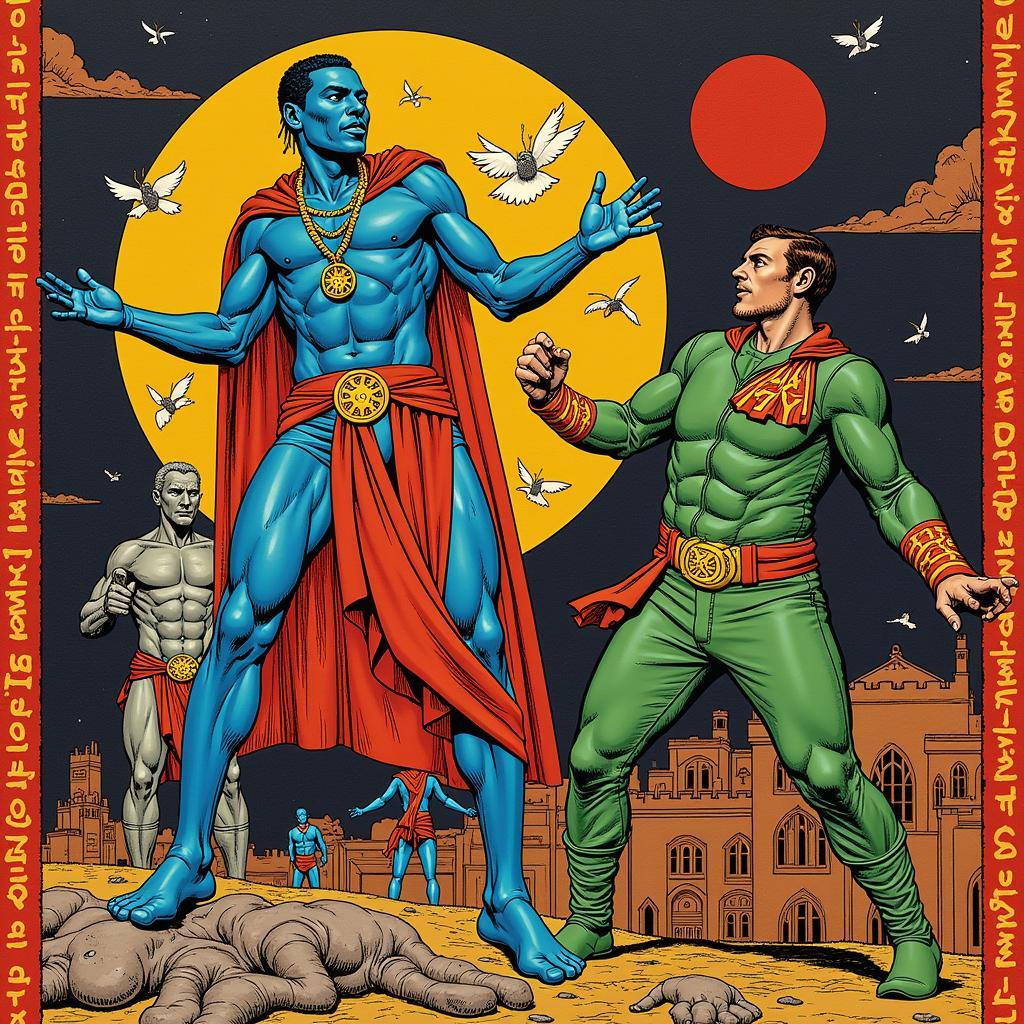African Harem Pants: A Journey Through Style and Culture
African Harem Pants, also known as jalabiyas or kaftans, are a versatile and elegant garment with a rich history and cultural significance. These loose-fitting, wide-legged pants originated in the Middle East and have been adopted and adapted throughout Africa, becoming a symbol of both tradition and modern style.
The History and Evolution of Harem Pants in Africa
The roots of harem pants can be traced back to the ancient civilizations of the Middle East, where they were worn by both men and women. The garments were initially associated with royalty and upper classes, but over time, they became more widely adopted by people from all walks of life.
The introduction of harem pants into Africa occurred through trade and cultural exchange. The garments were embraced by various communities, and their designs evolved to reflect local traditions and preferences.
From Traditional to Modern
In many African countries, harem pants are considered a traditional attire and are often worn during special occasions, religious ceremonies, and festivals. The garments are typically made from brightly colored fabrics and adorned with intricate embroidery, beadwork, and other decorative elements.
However, in recent years, harem pants have also gained popularity as a fashionable garment for everyday wear. Designers across the continent have embraced the versatility of the style, creating innovative interpretations that blend traditional elements with contemporary trends.
The Significance of Harem Pants in African Culture
Harem pants hold significant cultural value in many African societies. Here are some key aspects:
- Comfort and Modesty: The loose and flowing nature of harem pants provides comfort and freedom of movement. They are also seen as a symbol of modesty, particularly in cultures where covering the body is important.
- Identity and Belonging: The style and colors of harem pants often reflect the wearer’s cultural heritage and tribal affiliations. These garments can be a way to express identity and connect with ancestral traditions.
- Beauty and Elegance: The flowing lines and vibrant colors of harem pants have long been admired for their beauty and elegance. They are often considered a statement of style and sophistication.
Why are Harem Pants So Popular?
The enduring popularity of harem pants in Africa can be attributed to their versatility, comfort, and cultural significance. They offer a range of benefits:
- Versatility: Harem pants can be dressed up or down, making them suitable for a wide range of occasions. They can be paired with simple t-shirts, elegant blouses, or traditional vests.
- Comfort: The loose-fitting design allows for maximum comfort and breathability, particularly in warm climates.
- Flattering: Harem pants flatter a variety of body types and can be customized to create a flattering silhouette.
Where to Buy African Harem Pants
If you’re looking to add a touch of African style to your wardrobe, here are some places to find beautiful harem pants:
- Local Markets: Many African countries have bustling markets where you can find a wide range of traditional and contemporary clothing, including harem pants.
- Online Retailers: Several online retailers specialize in African clothing and offer a diverse selection of harem pants in various styles, fabrics, and colors.
- Designer Boutiques: You can also find unique and high-end versions of harem pants in designer boutiques throughout Africa.
Styling African Harem Pants
There are many ways to style African harem pants to create a unique and eye-catching look. Here are some tips:
- Choose the Right Fabric: Harem pants are available in a variety of fabrics, from light cotton to luxurious silk. Choose a fabric that is comfortable and appropriate for the occasion.
- Experiment with Colors and Patterns: Don’t be afraid to experiment with vibrant colors and bold patterns. You can find harem pants in a wide range of designs, from traditional African prints to modern geometric patterns.
- Accessorize with Jewelry: Add a touch of sparkle and glamour to your harem pants with statement jewelry.
- Pair with Different Tops: You can create a wide range of looks by pairing harem pants with different tops, from casual t-shirts to elegant blouses.
FAQ
Q: What are harem pants called in Africa?
A: In many parts of Africa, harem pants are known as jalabiyas, kaftans, or bubus.
Q: Can men wear harem pants in Africa?
A: Yes, harem pants are worn by both men and women in many African cultures.
Q: What are some traditional designs of African harem pants?
A: Some popular traditional designs include kente cloth, aso-oke, and ankara prints.
Q: Where can I find a good selection of African harem pants online?
A: There are many online retailers that specialize in African clothing, such as [Online Retailers Name].
Discover More About African Culture and Style
Explore our website to learn more about the vibrant culture and traditions of Africa. Discover articles on [List Relevant Topics] and stay updated on the latest fashion trends from the continent.
[Shortcode-1]african-harem-pants-woman-1|Woman wearing traditional African harem pants|This image showcases a woman wearing traditional African harem pants with intricate embroidery and vibrant patterns, highlighting the beauty and cultural significance of this garment in African fashion.
[Shortcode-2]african-harem-pants-woman-2|Woman wearing modern African harem pants|This image depicts a woman wearing modern African harem pants, showcasing the contemporary interpretations of this versatile style. The pants are made from a modern fabric with a chic design, demonstrating the evolution of harem pants from traditional attire to trendy fashion.
[Shortcode-3]african-harem-pants-man-1|Man wearing African harem pants|This image shows a man wearing traditional African harem pants, demonstrating the versatility and cultural significance of this garment for both men and women in African culture. The pants are made from a rich fabric and adorned with intricate details, reflecting the heritage and elegance of the style.
